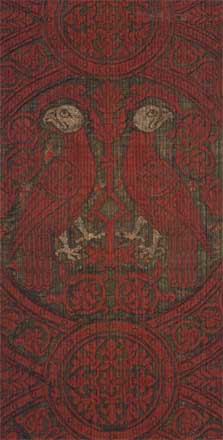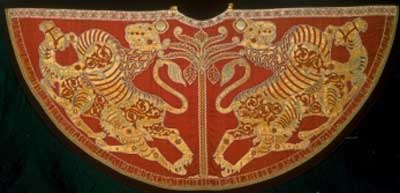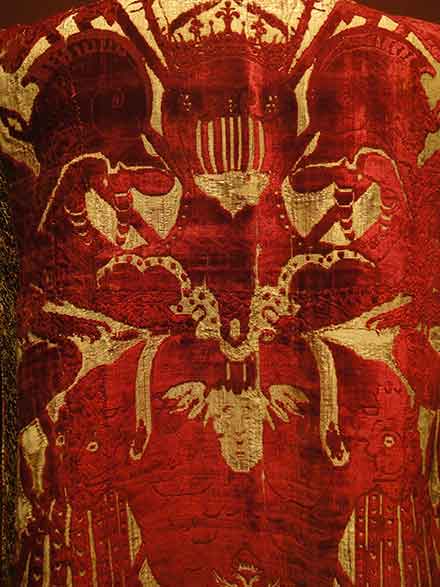Renaissance Italian Textiles
Introduction
At the end of Middle Ages Italians were mostly merchants who imported luxury textiles from Byzantium and the Middle east. The decline of the Byzantine empire encouraged the development of the silk industry in Italy itself. At that time fabrics made of silk and precious metal threads counted among the most valuable items owned by both individuals and the Church.
Sicily
The first textile center in Italy at the end of the Middle Ages was Palermo, as Tunisian Arabs conquered Sicily in 827 and introduced sericulture. Until that time Sicily had been in the Byzantine sphere and its population was Christian. Between 1060 and 1091 the control of the island was taken by the Normans. During the 12th century the Kingdom of Sicily was prosperous and one of the wealthiest states in all of Europe. This triple cultural background influenced deeply the style of textiles created in Sicily. The Islamic influence remained strong until the second half of the 13th century. Fragments of silk tapestry kept by the V&A Museum (Inv 742/4019) and by Museum fur Angewandte Kunst, Vienna with their geometric motif of stylized flowers and palmettes show very typically the Islamic influence. The following fragment (Metropolitan Museum) features a pair of parrots in roundels that are part of the standard repertory of the Byzantine style.

Ref: Woven Silk with Paired Parrots in Roundels, Metropolitan Museum

Roger II Mantel,
Kunsthistorisches Museum, Schatzkammer, 1133-1134
Ref: Kendrick, A. F., "The Sicilian woven Fabrics of the XIIth and XIIIth Centuries", in The Magazine of Fine Arts, I, 1905-1906,


Cut velvet, Italy late 16th c. Red silk and golden metal threads. Mus?e des Tissus, Lyon
